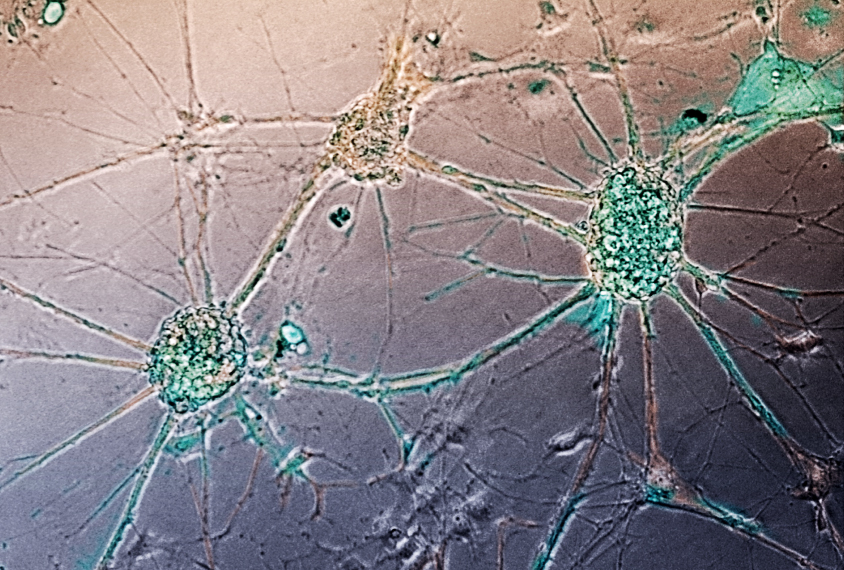
Francois Paquet-Durand / Science Source
THIS ARTICLE IS MORE THAN FIVE YEARS OLD
This article is more than five years old. Autism research — and science in general — is constantly evolving, so older articles may contain information or theories that have been reevaluated since their original publication date.
Disrupting cell-to-cell contact among developing neurons, even briefly, may alter their fates for good, researchers reported yesterday at the 2015 Society for Neuroscience annual meeting in Chicago. The unpublished findings sound a note of caution for researchers working with neurons made from induced pluripotent stem (iPS) cells.
iPS cell technology, which allows scientists to reprogram skin cells into almost any type of cell in the body, has offered promise for autism research. Scientists can make neurons from individuals with autism who have specific genetic changes or other characteristics and compare them with neurons made from the skin cells of controls.
Neurons from iPS cells can be grown either in a multilayered, three-dimensional configuration called an organoid, or in a single layer in a laboratory dish. Cells grown in organoids do a better job of differentiating into mature neurons of different subtypes; those grown in monolayers proliferate faster and are easier to examine for shape and other characteristics.
The new study began with a novel idea to implant immature neurons made from iPS cells into mouse brains. “We were trying to see whether by transplantation in vivo we could improve differentiation,” says study leader Flora Vaccarino, professor of neurobiology at the Yale Child Study Center.
Vaccarino’s team broke apart clumps of immature neurons, called progenitors, and injected the cellular mixture into the brains of 1- to 5-day-old mice. They waited two months. Then they waited four more. But the cells did not transform into different subtypes.
“Our cells fail to differentiate,” says Giovanna Altobelli, a scientist at the University of Naples Federico II in Italy, who has spent the past two years as a visiting researcher in Vaccarino’s lab.
After six months, the baby mice that hosted the human neurons were all grown up. But the neurons still languished in their immature state.
Brief break:
To understand why this might be so, the researchers compared gene expression in cells grown in organoids with that of cells just after the clumps are disassociated.
“We wanted to know whether the cells we transplanted were different or not,” says Vaccarino. “And they are, even at that stage.”
More than 3,000 genes show altered expression in the disassociated progenitor cells compared with intact organoids. Many of these genes regulate cell proliferation, cell-to-cell contact and packaging of DNA.
In another experiment, the researchers tracked the maturation of progenitors grown in three configurations: as monolayers, as intact organoids and as organoids that have been disassociated and then promptly re-aggregated. The results of this test, too, suggest that disrupting neurons’ contact with each other almost immediately scrambles their biology in a way that isn’t fully recoverable.
After a month, the cells that were only temporarily disassociated are still disorganized, variable and don’t form the full range of mature excitatory and inhibitory neurons. “They do better than the monolayer, but [they’re] not by any means as good as the organoids,” Vaccarino says.
The results suggest that the complex manipulations of iPS cells involved in turning them into neurons could profoundly alter gene expression in the cells, potentially muddying study results.
They also provide a point in favor of organoid culture, an approach to growing neurons from iPS cells that has emerged in just the past five years. “So far, it seems to be a more faithful way to recapitulate development,” Vaccarino says.
Monolayer culture of neurons may still be useful for some purposes. In fact, by probing differences in gene expression between monolayer- and organoid-grown neurons, the researchers hope to pinpoint which genes are essential for the proper organization of cells in the cortex, the brain’s outer rind.
For more reports from the 2015 Society for Neuroscience annual meeting, please click here.
By joining the discussion, you agree to our privacy policy.